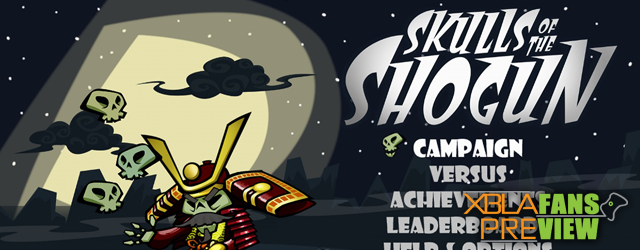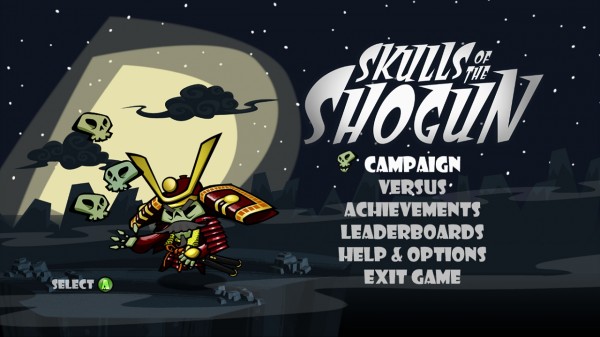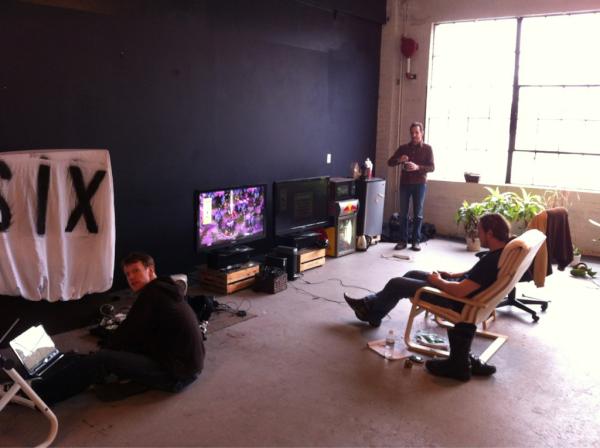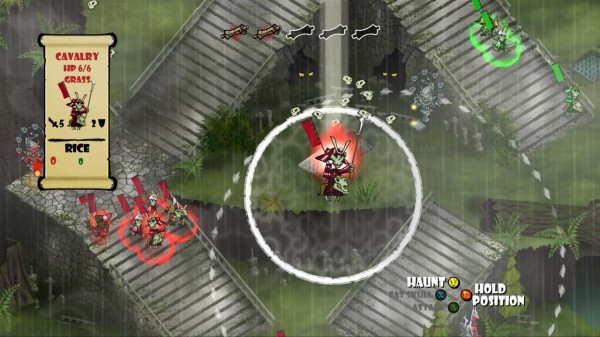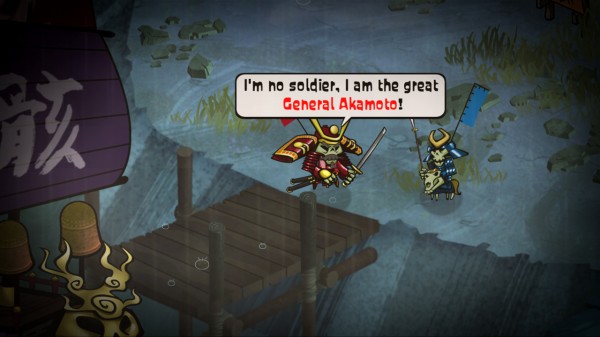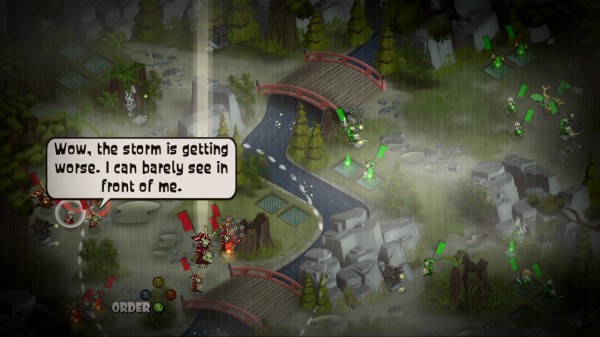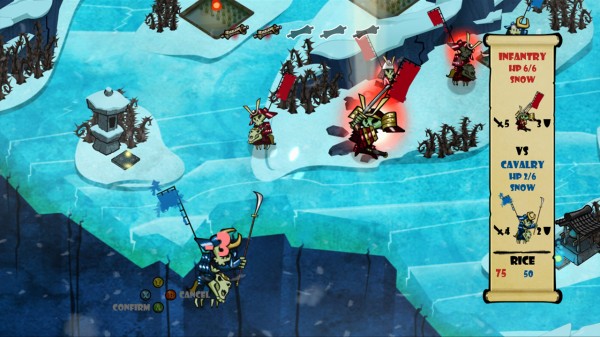Skulls of the Shogun preview: strategy games go to the afterlife
When I arrived at Haunted Temple Studios, the cab driver gave me a smug look. I’d asked him to stop one door over from a strip club at what looked to be an abandoned construction area. The gears in his head were turning and his face read “this kid just doesn’t want to admit he’s going to Dreamgirls.” He continued to prod me about being in the wrong location, but my trusted iPhone assured me this was the address Jake Kazdal, founder of Haunted Temple had given me. I wandered into the construction area hoping this was the right location. The glitz and glamor of the neighbors distracting the average onlooker from the amazing gem inside an unmarked building next door made arguably the perfect metaphor for an indie studio’s plight in the industry. Inside this large open, warehouse of a building, Jake and his team were putting the finishing touches on Skulls of the Shogun, literally hours after rescuing the game from a flood.
As I sat down and picked up the controller and loaded up the first screen, Jake grabbed his pad and pen and began to write notes to himself for small tweaks to the game. By the time I had made it through the first few levels he’d filled entire pages with small things that only a game’s creator might even notice. All the while, one of the guys in the background shouted out the view totals on the Kotaku article about the flood. They weren’t worried about a busted pipe or wet electronics; they were excited that it might cause a few additional people to hear about the game a game they were going to continue to perfect. Jake probably regrets saying they work late and to play as much as a I wanted, because I took that as in invitation to stay with the team and play through the entire first half of the game as I waited on my ride to get off the night shift.
Skulls of the Shogun set out to redefine a genre that had gone stale by making it more accessible. While the game’s first few levels hold your hand teaching you the mechanics, it really isn’t even necessary. Obtrusive user interfaces have been removed and replaced with simplicity. Instead of confining movement to gridded combat, units have a set movement radius and can get to anywhere within that circle. At times objects will prevent paths not allowing you to reach your full potential, but it’s an extremely intuitive system. Upon attacking a unit, if the defending unit can counter attack, it will raise its weapon; otherwise the unit will cower in fear. Health is designated on each unit at all times by the length of their banner. Players have five movements allowed per turn as designated at the top by scrolls. These are separate from the five actions they are allowed, such as attacking or capturing a rice paddy. Everything remains subtle, yet obvious at the same time.
Still, the game has an extreme level of depth. Players have three main unit types (infantry, archers and cavalry) at their disposal and few special units (the general and various monks). If Skulls of the Shogun were to be a game of chess, the general would be both the king and queen (in fact, he even gets an extra action each turn). Used wisely, he can devastate another side; however, if he is killed the game ends. The game gets its name from the skull mechanic utilized whereby eating a skull will strengthen your character. By eating three skulls you will enter demon form (think Super Saiyan in Dragon Ball Z). Once a unit enters demon mode the stats will be maxed out and the unit will gain and extra turn. Players can only eat the opponents skulls or neutral skulls (those previously captured). By placing units next to each other, players can create a spirit wall, which prevents knock back and is used for a few other advanced strategies.
The game’s plot unfolds between battles as players progress through the levels. The legendary general has died and found himself waiting to enter the afterlife. The very man who betrayed him is now impersonating him and he must lead an army to enter the afterlife. The game really keys in on humor.
The world map is very reminiscent of Super Mario 3 with each season as its own world. Players are encouraged to go back and play earlier levels to lower their time completion of the game (one of the current achievements was to beat the game in under a certain amount of time) and to earn the various skulls for the level. Some levels can easily be beaten earning all three skulls, while others are nearly impossible as they require very different play styles. In the end, the goal with the skulls is to encourage players to replay levels and try new things.
As players progress through the campaign, new features are slowly implemented. The currency of Skulls of the Shogun is rice. In order to harvest rice, players must capture nearby rice paddies by stationing a unit there for one turn. After they have been captured, the rice paddies will slowly deplete over the next few turns with the controlling player garnering rice each turn. Rice can then be used by Monks to perform advanced magic spells or by the player at a captured unit outpost. During the single player, it’s often quite essential to harvest the rice and build and army to progress through the level effectively. Each unit costs a different amount with infantry the cheapest and archers the most expensive.
The first monk available is the fox monk, and while he can’t do damage, his ability to heal and buff allies makes him invaluable. Each time a monk devours a skull a new magic ability opens up to them. These later abilities will cost rice, limiting the amount of times they can be used in a match. As such, players will need to be careful when they utilize them. For example, a player who can get a general in demon form and a fox monk in demon form becomes almost unstoppable. The fox monk can buff the general’s defense by one for a turn, which makes him borderline impervious. And since he would now have three attacks, the general can ravage the other team. To get to that point is not very easy, though, and it can easily be avoided. Even so, should a player find themselves in this situation, recapturing the fox monk’s shrine will kill the demon fox monk and release all his captured skulls for consumption.
For the campaign levels, often the generals will be placed in a meditation state on both the player’s side and the opponent’s side. By remaining in this state, the general can max out their stats. Each turn will add to the general’s max health until it reaches the cap. This adds an entire additional ripple to the game as players must decide when to bring their most powerful unit to battle. It also often means leaving the general alone and unprotected as players advance forward to claim more territory.
The majority of the levels felt straightforward, but turned out to be rather challenging. One in particular took a good four tries before I gave up on advancing and just hid in the bushes with archers until the other team’s units were dead. With a while before release, there is always a chance they will change balancing of the units and such, but it was night that the layouts felt entirely different each time. None of the maps felt like reskins, which was great. For the maps that double in multiplayer, balancing for a game like this is always an issue, so Haunted Temple has created something where even if you go first that advantage is minimal by the level design. That’s something that is hard to do in a perfectly symmetrical map (even on a chessboard white has an advantage).
The next two monks introduced were entirely more offensive, especially the fire salamander. Leveled up, he proved to be a deadly asset. The crow monk allows for more advanced strategies, as players can push units and objects on the map. For example, the crow can push an enemy off a cliff or even push a skull away from an enemy or toward an ally. Even pushing enemies into spiky bushes would deal damage, which was a nice touch.
By now, the clock had struck twelve and it was time for me to leave and attempt to rest up before a flight to GDC the next day. I’d entirely lost track of time. But it was so totally worth it. Fall can’t come soon enough.

